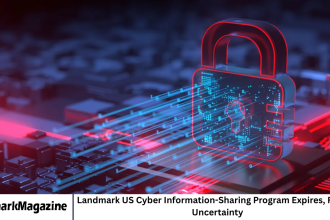The United States Department of Defense (DoD) has announced a decision to reduce mandatory cybersecurity training requirements for service members, citing the need to allow troops to focus more on their operational duties and core missions. The move, while intended to streamline administrative workloads, has sparked discussions about potential risks and the balance between mission readiness and cyber vigilance.
According to defense officials, the change is part of a broader effort to reduce redundant administrative tasks and “give time back to the force.” However, cybersecurity experts warn that reducing training may leave military personnel more vulnerable to cyber threats in an era where digital warfare plays an increasingly vital role.
The Reason Behind the Policy Shift
The DoD’s decision stems from feedback received through internal reviews and surveys, where service members expressed frustration over excessive administrative requirements, including repetitive online training modules. Many troops reported that the mandatory cybersecurity courses were time-consuming and often redundant, offering little new information year after year.
In response, the Pentagon reviewed its training procedures and decided to scale back certain mandatory cybersecurity lessons for non-cyber personnel. The idea, according to DoD officials, is to ensure that soldiers can dedicate more time to physical training, mission planning, and tactical readiness without being overwhelmed by digital coursework.
Officials emphasized that the decision does not reflect a reduced focus on cybersecurity but rather a targeted approach—providing intensive training only to those directly involved in cyber defense, intelligence, or IT-related roles.
Balancing Operational Readiness and Cybersecurity
The challenge for the Pentagon lies in finding the right balance between operational preparedness and cyber resilience. While fewer mandatory courses may improve efficiency and morale, cybersecurity remains an integral part of modern military operations.
The U.S. military faces constant cyber threats from state-sponsored actors, hackers, and cybercriminal groups seeking to breach networks, steal sensitive data, or disrupt communication systems. Every service member, regardless of role, has some responsibility in maintaining digital security—whether through password protection, identifying phishing attempts, or handling classified information appropriately.
Therefore, even with a reduction in training hours, the DoD must ensure that soldiers retain essential cybersecurity awareness. Officials say the new approach will focus on “smarter training,” emphasizing real-world scenarios, interactive modules, and targeted refresher courses instead of generic annual presentations.
Cyber Threats Facing the U.S. Military
Cybersecurity has become a critical battleground for national defense. Adversaries increasingly employ digital tactics to gain an edge, from disrupting military communications to targeting supply chains and weapon systems. Recent cyber incidents have underscored the need for strong digital defenses across all levels of the armed forces.
Malicious actors often exploit human error as a point of entry. A single click on a malicious link or the mishandling of sensitive data can expose entire networks to infiltration. For this reason, cybersecurity experts argue that reducing awareness training, even for non-specialized personnel, could increase the overall risk of breaches.
The Pentagon has acknowledged these risks but maintains that smarter and more efficient training—not necessarily more frequent training—is the solution. The department plans to integrate cybersecurity awareness into other mission-related programs to ensure the topic remains relevant and practical.
Reaction from Defense Experts and Analysts
The DoD’s move has received mixed reactions. Some defense analysts support the decision, arguing that repetitive training sessions often fail to produce meaningful behavioral change. Instead, they advocate for modernized, scenario-based programs that simulate real cyber incidents and decision-making under pressure.
Others, however, view the reduction as a potential weakening of the military’s cyber posture. With the increasing digitization of defense systems, from drones to communication networks, every soldier is now a potential cyber target. Critics warn that even minor lapses in cyber hygiene could lead to significant vulnerabilities.
Cybersecurity professionals within the defense sector have suggested that the DoD invest in periodic awareness campaigns, short video briefings, and quick-response simulations to keep soldiers informed without overburdening them.
The Role of Technology and Automation
To compensate for the reduction in training, the Department of Defense is reportedly exploring the use of advanced cybersecurity tools and automated systems. Artificial intelligence and machine learning technologies are being deployed to detect, isolate, and mitigate cyber threats in real time.
Automated security monitoring can reduce the need for human intervention in routine threat detection, allowing troops to focus on mission-critical operations. However, experts caution that technology alone cannot replace human judgment and awareness. Cybersecurity remains a shared responsibility that requires vigilance at every level.
By integrating smarter technology with targeted human training, the DoD hopes to maintain high cybersecurity standards while freeing up valuable time for soldiers engaged in field operations.
Implications for Military Cyber Readiness
The reduction in cybersecurity training represents a significant policy shift, one that could set a precedent for how the U.S. military manages digital preparedness moving forward. While the DoD insists that readiness will not be compromised, the decision highlights the growing tension between operational efficiency and cyber vigilance.
Military cybersecurity readiness is not only about technical defenses but also about culture—instilling a sense of responsibility among all personnel to safeguard information systems. The Pentagon’s next challenge will be ensuring that this cultural awareness continues to thrive despite fewer training hours.
If implemented effectively, the new model could streamline training, reduce redundancy, and improve focus across the force. However, if not managed carefully, it could lead to gaps in cyber awareness that adversaries might exploit.
Frequently Asked Questions
Why did the Department of Defense reduce cybersecurity training?
The DoD reduced cybersecurity training to decrease administrative burdens on service members and allow them to focus more on core mission tasks and operational readiness.
Does this mean cybersecurity is no longer a priority for the military?
No, cybersecurity remains a top priority. The DoD plans to replace repetitive, generic training with more focused and practical education tailored to specific roles.
Who will still receive full cybersecurity training?
Personnel directly involved in cyber defense, intelligence, and information technology operations will continue to receive comprehensive and advanced cybersecurity training.
What risks come with reducing training?
The main risk is that reduced awareness could lead to increased susceptibility to phishing, social engineering, and other cyberattacks targeting military networks.
How will the DoD maintain cybersecurity standards after this change?
The department intends to integrate cybersecurity awareness into broader mission training and employ AI-based security systems to monitor and respond to threats.
What has been the reaction from experts?
Opinions are divided. Some support the efficiency-focused approach, while others warn that cutting training may reduce preparedness against evolving cyber threats.
What does this mean for the future of military cyber readiness?
The decision reflects a shift toward a more balanced and technology-driven defense strategy, but long-term success will depend on how effectively awareness and vigilance are maintained.
Conclusion
The U.S. Department of Defense’s decision to scale back mandatory cybersecurity training marks a major step in reshaping how the military balances mission readiness with digital defense. By reducing repetitive coursework and emphasizing efficiency, the Pentagon aims to empower troops to focus on their primary missions while still maintaining cyber awareness.
However, as cyber threats grow more sophisticated, the challenge will be ensuring that reduced training does not translate to reduced vigilance. The DoD must continue investing in smarter, scenario-driven education and advanced defense systems to protect both its networks and personnel.









